Osechi Ryori Essentials: The Japanese New Year's Feast

’Tis the season the world around for giving thanks; and for many Japanese people, the most important holiday of the year is New Year’s Day, when everything is put aside for just a few days to welcome in family and the New Year. Much like in Western countries where the holiday season includes a traditional feast of roasted hams and turkeys, gravy, puddings and pies, and even a time for barbequing in Australia, Japan cannot begin the New Year without enjoying the traditional feast called osechi ryori.
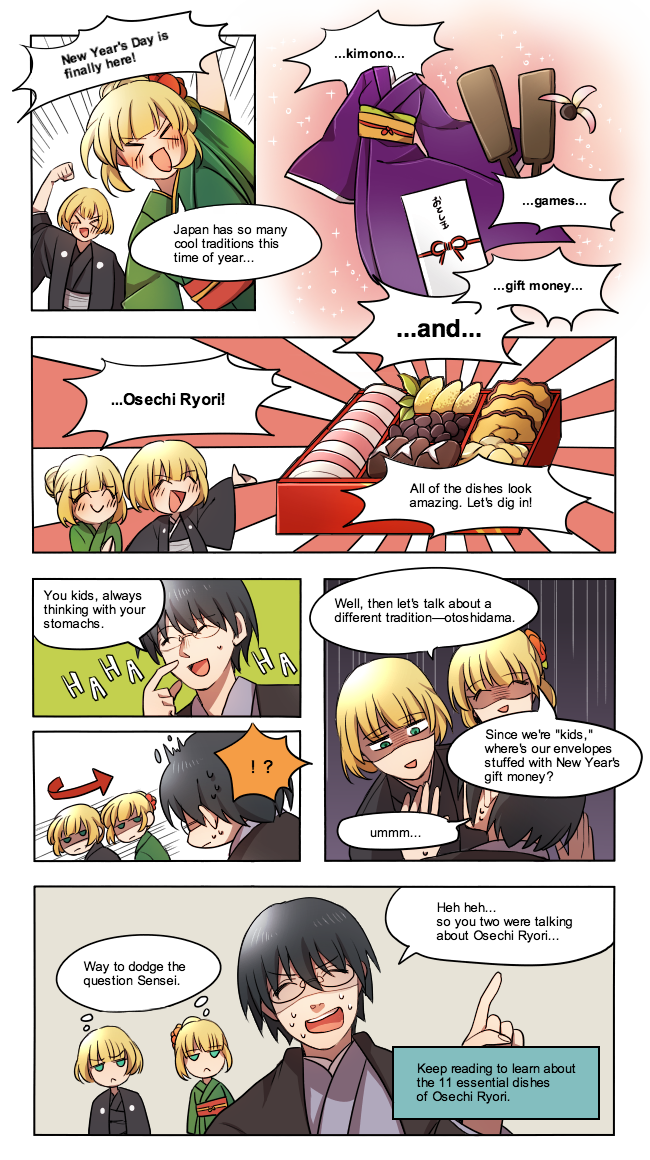
What Is Osechi Ryori?
In olden days, there was a custom in Japan of offering harvested food to the gods as a way of expressing gratitude and appreciation for the blessings of nature and good harvests they received. The offered food was later cooked and eaten as osechi ryori with the hope of receiving continued blessings in the future. This custom was only common among nobles and was performed after seasonal harvests and large fishing catches (which occurred around 5 times a year) as well as on New Year’s Day; however, during the Edo period (1603–1868) it spread among the common people and the number of ceremonial meals was reduced to only once a year on New Year’s Day.
Today, in Japan, osechi ryori has evolved into a celebratory feast enjoyed on New Year’s Day with the hope of further prosperity and safety, good health, and happiness for the family in the coming year.
Presenting the Beauty of Osechi Ryori with a Jubako Box
Osechi ryori is almost always served in 2–5 stacked square boxes with a lid on the top box. This set of boxes is called a jubako, which means “stacked boxes” in Japanese. A jubako is symbolically used with the hope that all of the happiness that accompanies eating osechi ryori will be so great that it will be “stacked” upon each other in the coming year just like dishes nestled in the boxes. It is said that authentic osechi ryori is served in a jubako made of 4–5 boxes, but 2–3 tiered jubako are very common today.
While there isn’t an absolute rule you must follow when feasting on osechi ryori, there is a traditional order for which dishes go in each of the tiered boxes. There is also the custom of eating the dishes from the top box first, and working your way down to the bottom box.
Popular Osechi Ryori Dishes
A few centuries ago, osechi ryori was made only from the available ingredients harvested or caught locally, and as such the dishes found in one region of Japan often differed from those found in another region. However, there are several dishes in today’s osechi ryori that are so common and popular that you’re likely to see them almost anywhere you go.
While traditions have slowly evolved, osechi ryori is still quite symbolic with each dish having a specific meaning. There are over 20 dishes associated with this Japanese New Year’s feast, but the following 11 are some of the most popular and well-known throughout the country. The order of the dishes are presented as you would find them in a 3-tiered jubako, starting from the top box.
Top Jubako Box
In the top box of the jubako you will find at least six dishes that are grouped into threes based on their meaning. The first group, known as iwaizakana, contains kazunoko, kuromame and tazukuri; the second group, known as kuchitori, contains kamaboko, datemaki, and kurikinton.
Kazunoko (Herring Roe)
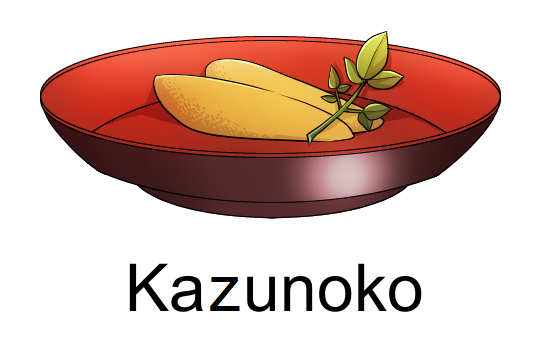
Because herring roe contains so many eggs, kazunoko is served and eaten with the wish for many offspring to be brought into the family in the coming year.
Kuromame (Sweetened Black Beans)
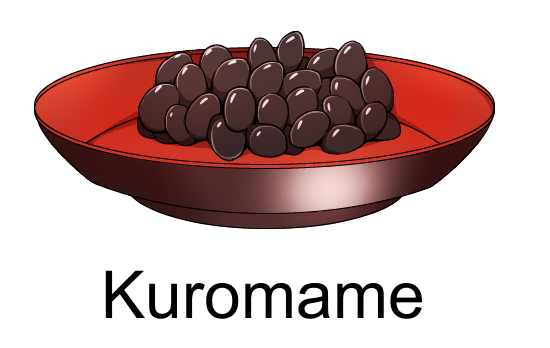
The word mame, which means “beans” in Japanese, also can mean “to be healthy.” Kuromame is served and eaten with the wish for health so that you can work hard in the coming year.
Tazukuri (Candied Sardines)

In olden days, farmers used dried sardines as fertilizer for their rice fields. This sweetened version of dried sardines is served and eaten with the wish for a good harvest in the coming year.
Kohaku-Kamaboko (Fish Cake)
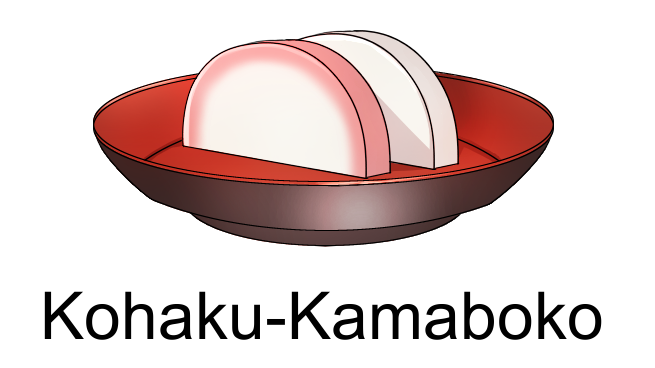
Red and white are colors considered to be both festive and good luck in Japan. The red color (usually shown as pink in kamaboko) is believed to ward off bad spirits, and the white color implies cleansing, holiness, sanctity and so forth. It is also said that the dome shape of kamaboko depicts the rising sun.
Datemaki (Rolled Omelet)
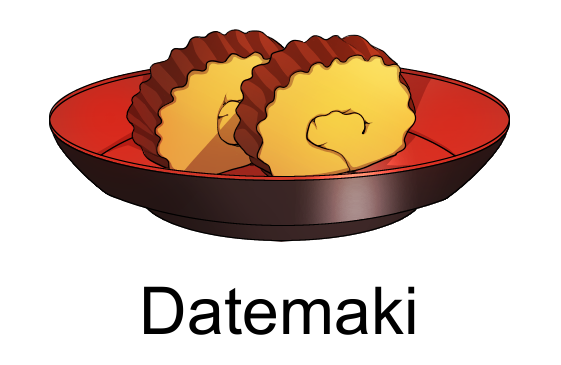
The shape of this sweetened, rolled omelet resembles a scroll. Eating datemaki is meant to bring you further cultural development and scholarly achievement.
Kuri-Kinton (Mashed Chestnuts)
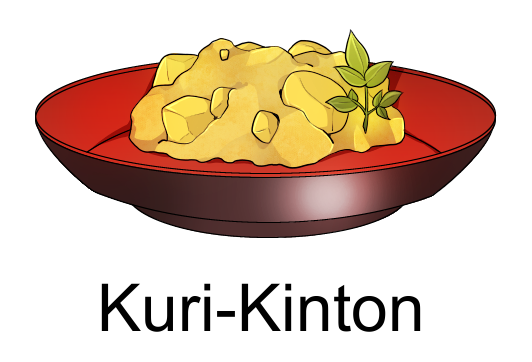
Not only do these sweetened, mashed chestnuts resemble gold dumplings but the word kinton means “gold dumpling.” Kuri-kinton is included in osechi ryori with the hope of receiving financial prosperity.
Middle Jubako Box
Ebi (Shrimp)
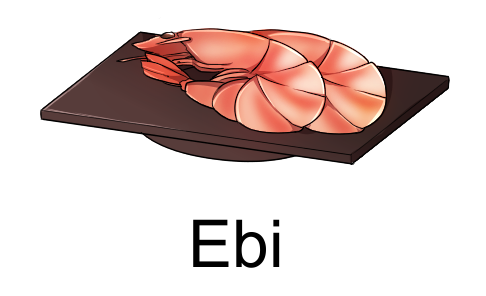
One of the more interesting symbolic dishes, the shape of a shrimp with its curved back is tied with the wish of longevity—in the sense that with only having the opportunity to live a long life your back will become curved like a shrimp.
Renkon (Lotus Root)
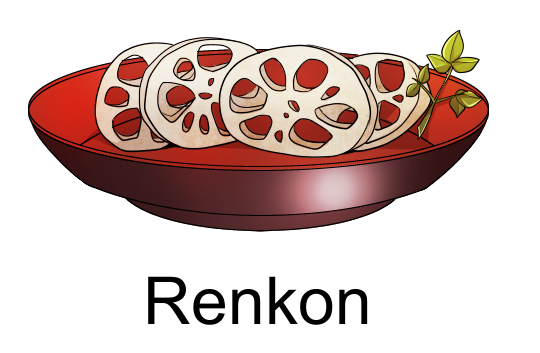
Slicing the renkon, reveals many holes within the root, which suggest a good outlook in the coming future when eating this lucky vegetable.
Bottom Jubako Box
Kobumaki (Rolled Herring in Seaweed)

Made with herring and a seaweed called konbu, kobumaki offers the trifecta of longevity, many offspring, and scholarly achievement. So if you’re allergic to shrimp (ebi), scared of herring roe (kazunoko), and don’t like omelet (datemaki), you can still receive the powers of the top and middle jubako boxes by simply eating kobumaki!
Nejiri-Konnyaku (Twisted Konjac)
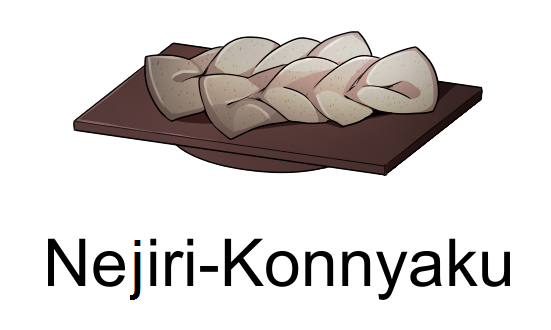
Nejiri-konnyaku is prepared in a way so that it resembles a rope; a symbol that suggests the spirit of the samurai since tightened ropes are related to the samurai preparing for battle.
Shiitake Mushrooms
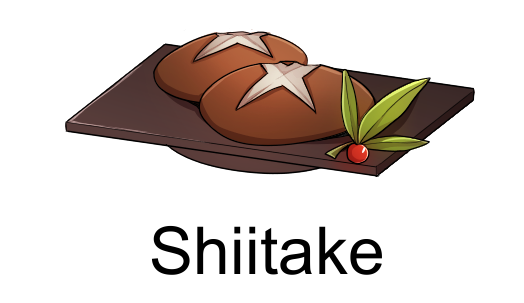
The shape of the shiitake mushroom cap resembles the soldier’s hat of olden days that was worn in the battlefield. Shiitake mushrooms are included in osechi ryori as a wish for health and well-being.
Experience the Tradition of Osechi Ryori
If you are visiting Japan during New Year holiday season, we suggest taking the opportunity to try the many traditional, exciting and interesting dishes included in an osechi ryori jubako. There’s no need to worry about buying ingredients, preparing, and cooking yourself since ready-made osechi ryori is available across Japan—even at places like 7-Eleven and FamilyMart. Or, you can go to the basement floor of many metropolitan department stores like Mitsukohi, Takashimaya, or Isetan and become mesmerized by the beautifully packed osechi ryori to go.









